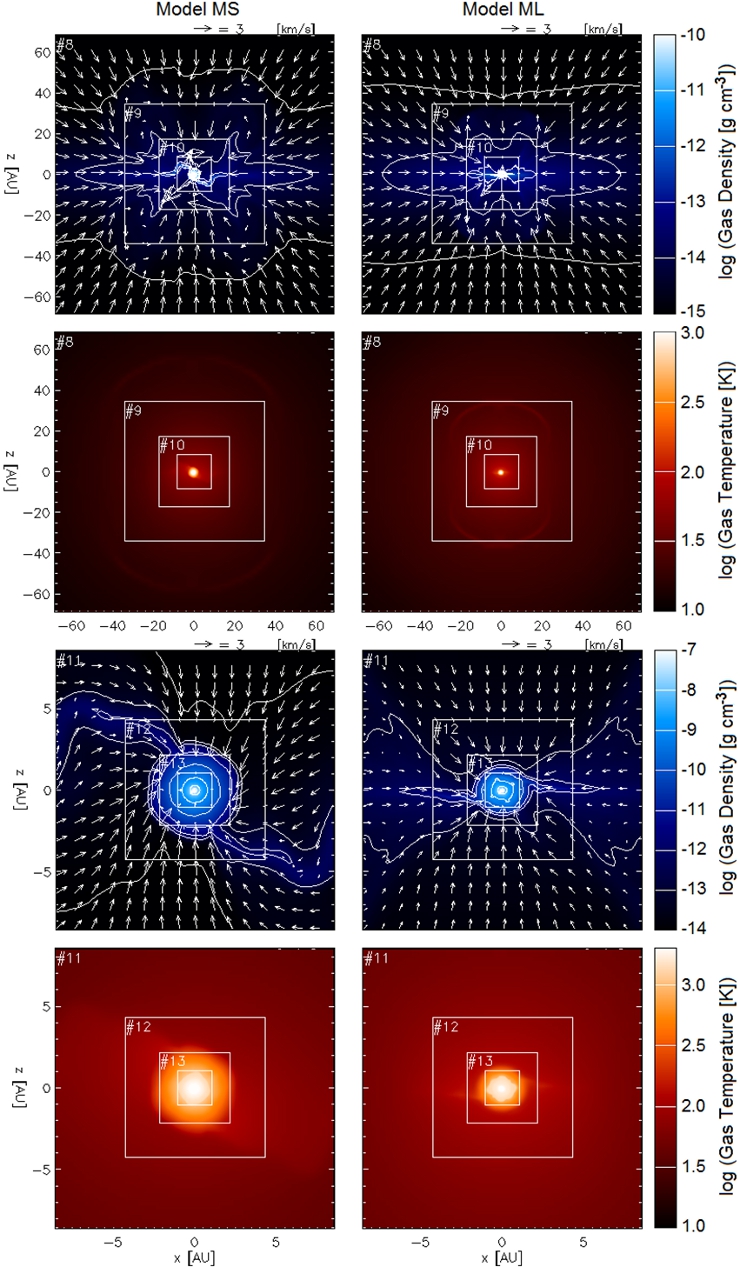| EPoS Contribution |
|
Radiation Magnetohydrodynamic Simulations of Protostellar Collapse: Low-Metallicity Environments
Kengo Tomida Princeton, Princeton, US | |
| We report the results of 3D nested-grid radiation magnetohydrodynamic simulations of protostellar collapse with different metallicities. Because radiation cooling is more effective in the low-metallicity environments, first cores are colder and have lower entropies. As a result, first cores are smaller, less massive and have shorter lifetimes in the low-metallicity clouds. Therefore, first cores would be less likely to be found in low-metallicity star forming clouds. This also implies that first cores tend to be more gravitationally unstable and susceptible to fragmentation. The evolution and structure of protostellar cores formed after the second collapse weakly depend on metallicities in the spherical and magnetized models despite the large difference in the metallicities. Because this is due to the change of the heat capacity by dissociation and ionization of hydrogen, it is a general consequence of the second collapse as long as the effects of radiation cooling are not very large during the second collapse. On the other hand, the effects of different metallicities are more significant in the rotating models without magnetic fields, because they evolve slower than other models and therefore more affected by radiation cooling. | |
 | |
| Caption: Edge-on cross sections of MHD simulations of protostellar collapse with different metallicities at the end of the first core phase (left: solar abundance, right: 0.1 Z_sol). As radiation cooling is more effective in the low metallicity model, the first core in the low metallicity model is smaller, less massive and has shorter lifetime. The bipolar outflow in the low metallicity model is smaller because of the shorter lifetime. The first cores and pseudo-disks are warped due to the magnetic interchange instability. | |
| Collaborators: K. Tomisaka, NAOJ, Japan T. Matsumoto, Hosei, Japan M.N. Machida, Kyushu, Japan Y. Hori, NAOJ, Japan S. Okuzumi, Nagoya, Japan K. Saigo, NAOJ, Japan |
Key publication
Suggested Sessions: Cores to Disks |

